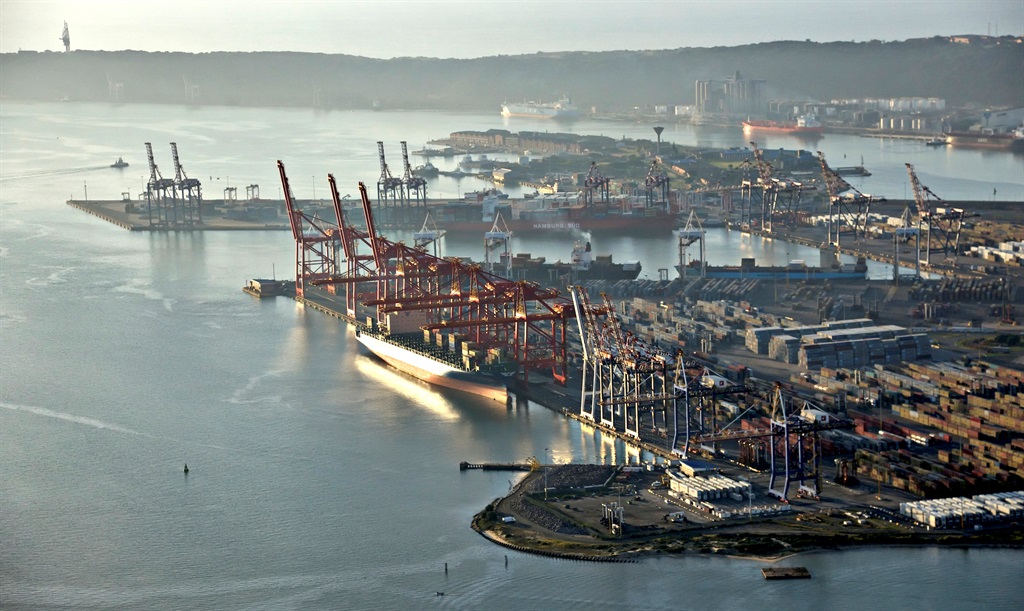News
Transnet wants to hand over its key Durban to Joburg line – complete with 3,573 staff

The Durban container terminal. (Getty Images)
- Transnet wants to outsource the running of its container corridor between Johannesburg and Durban for 20 years.
- It doesn’t have the money to make the business work, Transnet says, even though it believes trains can compete with trucks.
- A partner will need at least R5.5 billion available to put into the likes of the City Deep container terminal – and will be taking on thousands of current Transnet employees.
- That partner will also be taking on an average of 5 “security incidents” on the line per day.
- For more stories, go to www.BusinessInsider.co.za.
Between the port of Durban, where the ships are, and the south of Johannesburg, the gateway to Gauteng’s consumers and factories, there is a 670km run of double-track electrified rail.
At the one end is Bayhead, the “back of port” terminal for the Durban harbour, which is constantly looking to expand its freight-handling capability. At the other are the City Deep and nearby Kascon terminals, which can supposedly deal with 650,000 shipping containers per year.
That container corridor should be busy as hell, says owner Transnet, given the somewhat mind-boggling amount of stuff that needs to be moved between Durban and Johannesburg. But in recent years usage has slumped while the time it takes Transnet to move a train from one end to the other went from 28 hours to 37 hours, and customers demanded certainty about when their containers would arrive.
The operation is “not performing optimally”, Transnet says in documents that describe its latest plan: to bring in a private partner to fix the corridor.
Last week, Transnet started the search for someone to take over the whole thing and run it for 20 years.
See also | Transnet says some of its Gupta-deal Chinese locomotives have stood idle for 6 years
A successful partner will probably need at least R5.5 billion in working and investment capital, Transnet reckons – and it will be expected to take on the 3,573 staff currently dedicated to running the corridor, along with assets such as 419 locomotives.
Transnet estimates that 87% of containers are moved by road in South Africa – but believes rail should have close to a third of the market share. By some metrics, it thinks it can increase the number of containers on trains tenfold.
That would hold implications for a large section of the country, with fewer trucks on the N3, faster operations at the Durban port, and smoother logistics for both importers and exporters.
But achieving that would mean reversing a long-running trend, which Transnet itself has failed to do. It lacks the money necessary to invest in the operation, Transnet has told potential partners, but its numbers also point to many different types of trouble on the line.
See also | The South African state wants to buy its own oil tanker – and a fleet of other ships
The corridor can, in theory, carry 47 trains in each direction every day – when the system is not damaged due to flood or theft, both of which have recently hit it.
Right now, Transnet says, it is using about half the theoretical capacity of the line, split just about equally between passenger trains, general freight trains, and container-carrying trains.
Increasing that would take an overhaul of many parts of the system, and dealing with trouble beyond demanding customers and old rolling stock. On average, Transnet’s data shows, it has a little under 5 “security incidents” on the container corridor per day.
Transnet hopes to create a shortlist of potential partners towards the end of April. Those will then be asked for specific proposals, and one selected for final negotiations.
Matters to be discussed are due to include a potential profit sharing arrangement, and just how everything will be handed back to Transnet at the end of a 20-year lease.
